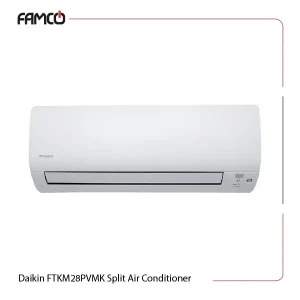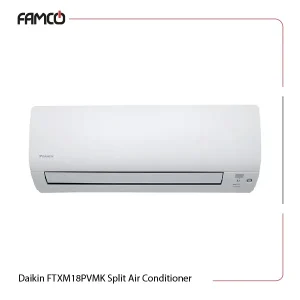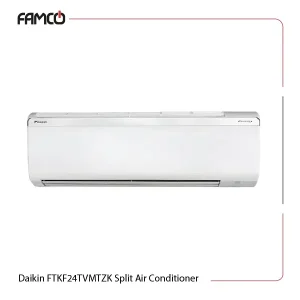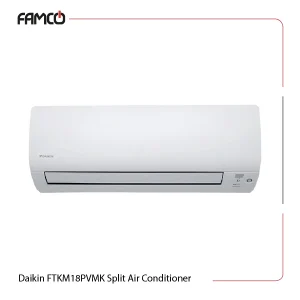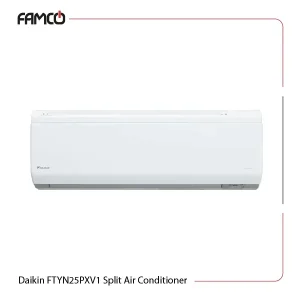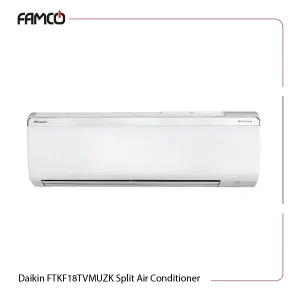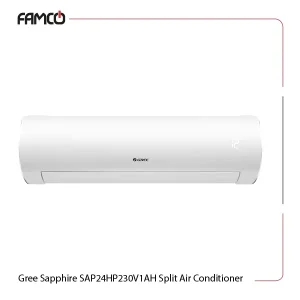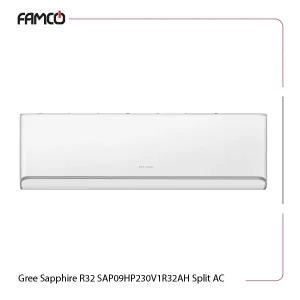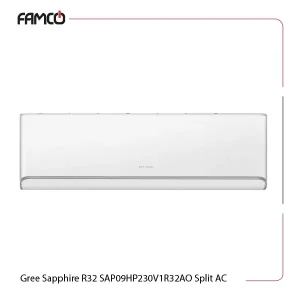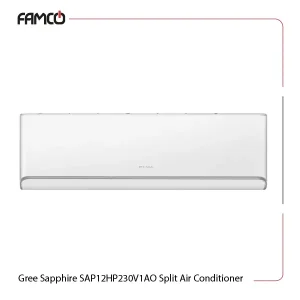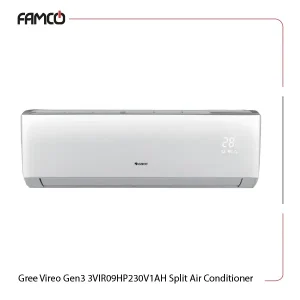A split air conditioner is a cooling and heating system consisting of two main components; an indoor unit and an outdoor unit. The split ac’s indoor unit, typically mounted high on a wall or ceiling, contains the cooling coil and fan, while the outdoor unit houses the compressor and condenser coil. Split systems offer efficient, quiet operation and customizable zoned cooling/heating, making them ideal for residential and commercial spaces seeking comfort and energy savings.
How Much does Mini Split Air Conditioner Cost?
The cost of a mini-split air conditioner and split air conditioner prices can vary significantly depending on factors such as brand, capacity, efficiency, features, installation requirements, and geographic location. Here are some general price ranges:
- Single-Zone Systems: These are designed to cool or heat a single room or zone. Prices typically range from $1,500 to $4,000 for the unit alone, not including installation.
- Multi-Zone Systems: These can cool or heat multiple rooms or zones with a single outdoor compressor unit. Prices for multi-zone systems can range from $2,000 to $10,000 or more, depending on the number of indoor units and their capacities.
- Installation Costs: Installation costs can vary widely depending on factors such as the complexity of the installation, the location of the indoor and outdoor units, and any additional materials or labor required. Installation costs can range from a few hundred to a few thousand dollars.
- Additional Costs: You should also consider additional costs such as electrical work, permits, and any optional features or accessories you may want, like Wi-Fi connectivity or advanced air purification systems.
To check split air conditioner price in UAE, visit Famcocorp website.
Choosing the Right Type of Split Air Conditioner
Choosing the right type of split air conditioner depends on various factors such as your cooling/heating needs, the layout of your space, energy efficiency, budget, and aesthetic preferences. Here are the main types of split air conditioners to consider:
Single-Zone vs. Multi-Zone:
Single-Zone: Ideal for cooling or heating a single room or area. If you only need to control the temperature in one room, a single-zone system is sufficient.
Multi-Zone: Suitable for cooling or heating multiple rooms or zones with a single outdoor unit. If you have multiple rooms or areas to cool/heal, a multi-zone system provides flexibility and efficiency.
Wall-Mounted vs. Ceiling Cassette:
Wall-Mounted: The most common type, with indoor units mounted on walls high up near the ceiling. They’re relatively easy to install and provide effective cooling/heating.
Ceiling Cassette: Mounted into the ceiling, these units offer a sleeker appearance and can distribute air more evenly throughout the room. They’re suitable for spaces with limited wall space or where aesthetics are important.
Ducted vs. Ductless:
Ducted: These systems use ductwork to distribute cooled/heated air throughout the space. They’re more discreet as the ducts are hidden behind walls or ceilings, but they require professional installation and are more expensive.
Ductless: Also known as ductless mini-split systems, these don’t require ductwork, making them easier and less expensive to install. They’re ideal for retrofitting older homes or rooms without existing ductwork.
Energy Efficiency:
Look for units with high SEER (Seasonal Energy Efficiency Ratio) ratings for cooling efficiency and HSPF (Heating Seasonal Performance Factor) for heating efficiency. Energy-efficient models may cost more upfront but can save you money on energy bills over time.
Capacity:
Ensure the system’s capacity matches the size of the room or area you want to cool/heat. Undersized units won’t adequately cool/heat the space, while oversized units may cycle on and off frequently, leading to inefficiency and wear.
Features:
Consider additional features such as programmable thermostats, Wi-Fi connectivity for remote control, sleep modes, and advanced air filtration/purification systems based on your preferences and needs.
Brand and Warranty:
Choose a reputable brand with a good warranty to ensure reliability and support in case of issues.
Benefits of Installing a Split Air Conditioner
Installing a split AC can offer several benefits compared to traditional window or central air conditioning systems. Here are some of the advantages:
- Energy Efficiency: Split air conditioners are often more energy-efficient than window units or central air conditioning systems. They typically have higher SEER (Seasonal Energy Efficiency Ratio) ratings, which means they use less energy to cool or heat your space, resulting in lower energy bills.
- Zoned Cooling/Heating: Split systems offer zoned cooling and heating, allowing you to control the temperature in individual rooms or zones independently. This can result in increased comfort and energy savings by only cooling or heating occupied areas.
- Quiet Operation: The compressor unit of a split air conditioner is located outside, resulting in quieter indoor operation compared to window units or central air systems where the noisy compressor is inside the building.
- Improved Aesthetics: Split air conditioners have sleek and compact indoor units that can be mounted high on walls or installed in ceilings, minimizing visual impact and preserving the aesthetics of your space. Additionally, there’s no need for large window units, which can obstruct views and natural light.
- Easy Installation: Split systems are easier to install compared to central air conditioning systems, especially if ductwork is not already in place. Ductless split systems require minimal disruption to walls and ceilings during installation, making them ideal for retrofitting older homes or buildings.
- Flexibility: Split air conditioners come in various configurations, including single-zone and multi-zone systems, allowing you to choose the setup that best suits your needs. You can add additional indoor units to a multi-zone system as needed, providing flexibility for future expansion.
- Improved Air Quality: Many split air conditioning systems come with advanced air filtration and purification features, such as ionizers or HEPA filters, which can help remove dust, pollen, allergens, and other particles from the air, improving indoor air quality.
- Increased Home Value: Installing a split air conditioning system can enhance the value of your home or property, as it is considered a desirable feature by potential buyers due to its energy efficiency, quiet operation, and comfort benefits.
Buying Guide for Split Air Conditioners
When purchasing a split air conditioner, it’s essential to consider several factors to ensure you choose the right unit for your needs. Here’s a comprehensive buying guide:
Cooling and Heating Capacity:
Calculate the required cooling and heating capacity based on the size of the room or area you need to condition. Oversized units may cycle on and off frequently, leading to inefficiency, while undersized units may struggle to maintain the desired temperature.
Energy Efficiency:
Look for units with high SEER (Seasonal Energy Efficiency Ratio) ratings for cooling efficiency and HSPF (Heating Seasonal Performance Factor) for heating efficiency. Energy-efficient models can save you money on energy bills over time.
Type of System:
Decide whether you need a single-zone or multi-zone system based on the number of rooms or areas you want to cool/heat independently. Additionally, choose between ducted and ductless systems depending on the presence of existing ductwork and your installation preferences.
Indoor Unit Type:
Choose between wall-mounted, ceiling cassette, or floor-mounted indoor units based on your space layout, aesthetics, and installation requirements.
Brand and Quality:
Select a reputable brand known for producing high-quality air conditioning systems. Research customer reviews and ratings to ensure reliability and performance.
Features:
Consider additional features such as programmable thermostats, Wi-Fi connectivity for remote control, sleep modes, and advanced air filtration/purification systems based on your preferences and needs.
Noise Level:
Pay attention to the noise levels of both the indoor and outdoor units. Quieter operation can enhance comfort, especially in bedrooms or quiet spaces.
Installation Requirements:
Assess the installation requirements, including the availability of space for outdoor unit placement, electrical requirements, and any necessary modifications to walls or ceilings.
Warranty and Support:
Check the warranty coverage and duration offered by the manufacturer. Additionally, inquire about after-sales support and maintenance services provided by authorized dealers or HVAC professionals.
Budget:
Determine your budget for purchasing and installing the split air conditioner, considering not only the upfront costs but also long-term energy savings and maintenance expenses.
Professional Installation:
Ensure that the installation is performed by qualified HVAC professionals to guarantee proper sizing, placement, and functionality of the unit.
You can buy split air conditioner online from Famcocorp.

